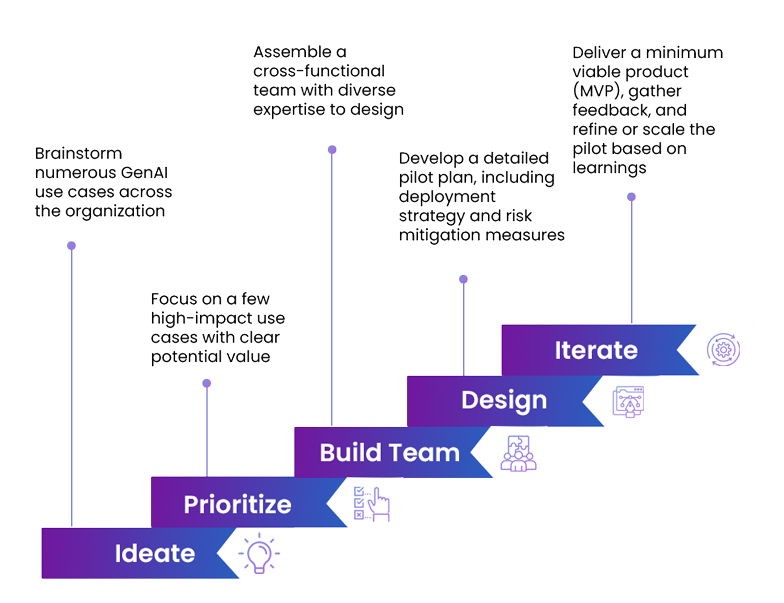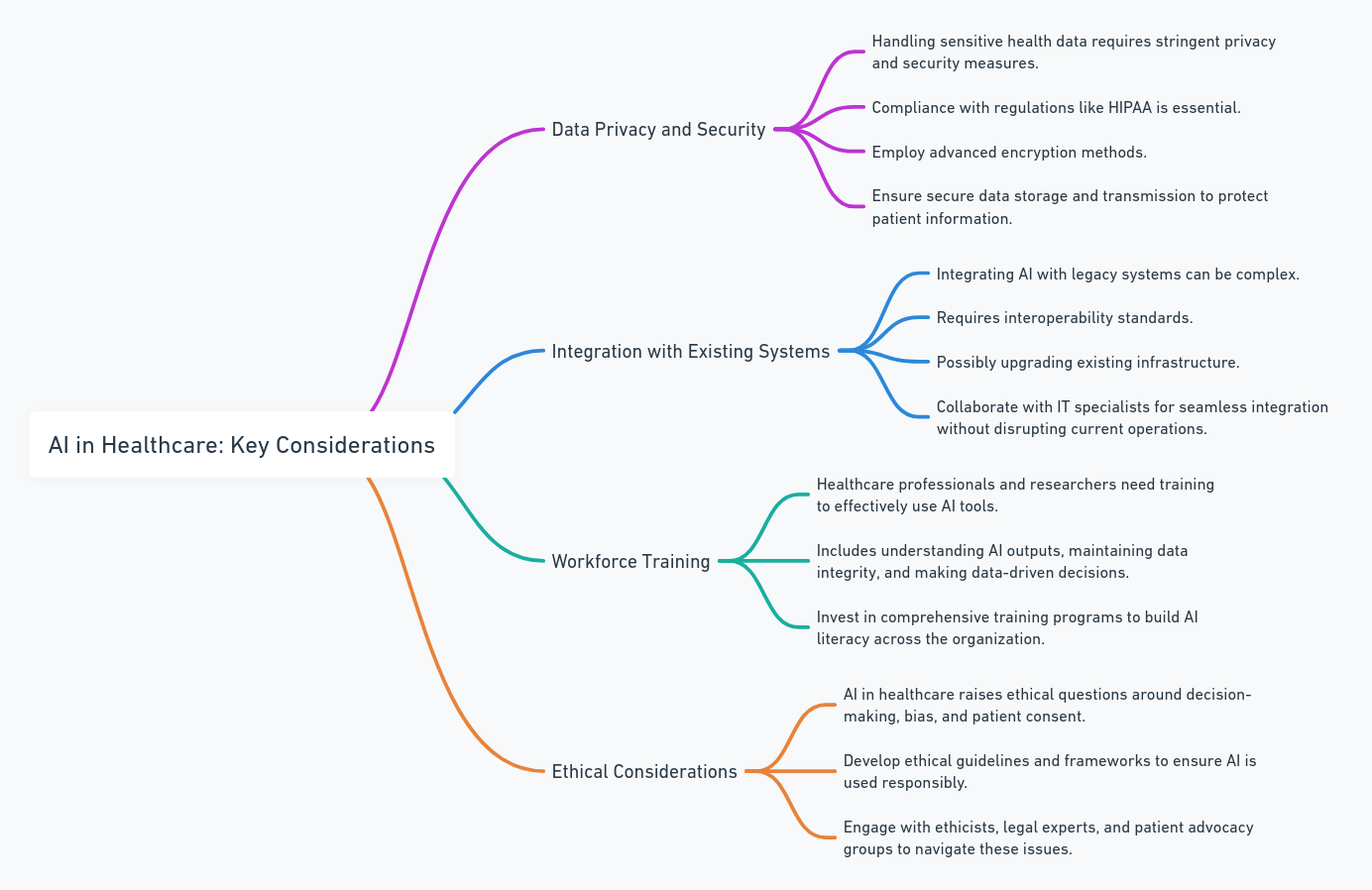
From Hype Cycle to Sprint Cycle – Bringing Generative AI into Production
Generative AI isn’t just a buzzword anymore. It’s rapidly transforming industries, and the pharmaceutical and home healthcare sectors are no exception. But what does it really mean to move beyond the hype and integrate this powerful technology into real-world operations?
“McKinsey estimates that Generative AI could generate $400 billion to $600 billion in value annually across the biopharma industry”
The Hype Cycle – The Potential of Generative AI
In the early stages, generative AI captured imaginations with its seemingly limitless potential. The ability to create new content, from text to images to music, seemed almost magical. This excitement fueled a period of rapid innovation, but also led to inflated expectations.
- Pharma’s Early Wins – Drug discovery is a prime example. Generative AI accelerated the identification of potential drug candidates by generating novel molecular structures. McKinsey estimates that AI could add $26 billion annually to pharma’s EBIT by 2026.
- Home Healthcare’s Personalized Touch – In home care, AI-powered chatbots began to provide personalized patient support, answering questions, scheduling appointments, and even offering emotional support.
“Salesforce Research found that 75% of healthcare professionals believe AI will transform their roles in the next five years”
While the initial buzz often centers around chatbots and image generators, the potential applications for pharma and home healthcare are far more profound.
Pharma – Accelerating Drug Discovery and Commercial Business Success
- Drug Design – Generative AI can dramatically speed up drug discovery by generating novel molecular structures with desired properties. Companies like Insilico Medicine are already leveraging this technology to identify potential drug candidates for diseases like fibrosis and cancer.
- Clinical Trials – AI-powered tools can analyze vast datasets to identify suitable patient populations for clinical trials, streamline trial design, and even predict trial outcomes. This can significantly reduce the time and cost associated with drug development.
- Personalized Medicine – Generative AI can analyze individual patient data (genomics, medical history, lifestyle) to tailor treatment plans, increasing efficacy and minimizing side effects.
- Omni-channel Marketing – AI-driven omni-channel engagements, ensuring that interactions with HCPs are strategic and goal-oriented, thereby fostering enhanced responsiveness and engagement
- Commercial Analytics – Redefines the way real-time business analytics are extracted, helping businesses navigate through commercial challenges using data intelligently.
Home Healthcare – Enhancing Patient Care and Efficiency
- Virtual Assistants – AI-powered virtual assistants can provide patients with personalized health information, medication reminders, and even companionship, reducing feelings of isolation.
- Remote Monitoring – Generative AI can analyze data from wearable devices and home health sensors to detect early signs of health deterioration, enabling timely intervention and preventing hospitalizations.
- Caregiver Support: AI tools can assist caregivers with tasks like medication management, appointment scheduling, and insurance claims, freeing up time for more direct patient care.
Implementing Generative AI in Practice
Moving from the hype cycle to the sprint cycle requires a strategic approach;
- Identify High-Impact Use Cases – Start with areas where Generative AI can deliver tangible value quickly. Focus on projects that align with your organization’s goals and address specific pain points.
- Data is King – Generative AI models thrive on high-quality data. Invest in robust data infrastructure, ensure data privacy and security, and develop strategies for data annotation and labeling.
- Build Cross-Functional Teams – Successful AI implementation requires collaboration between IT, data scientists, clinicians, and business leaders. Foster a culture of experimentation and learning.
- Scalability and Integration – Choose AI platforms that can scale with your needs and integrate seamlessly with existing systems. Cloud-based solutions like those offered by Salesforce, AWS or Snowflake can provide flexibility and scalability.
- Regulatory Considerations – The pharma and home healthcare sectors are heavily regulated. Ensure your AI solutions comply with all relevant regulations, including HIPAA and FDA guidelines.

Transitioning to the Sprint Cycle
Here’s a roadmap for successfully integrating generative AI in pharma and home healthcare.
Step 1 – Assess Readiness and Define Objectives
Before implementing AI, organizations must assess their readiness. This includes evaluating current technological infrastructure, data availability, and staff expertise. Define clear objectives for AI integration, such as improving marketing requirements or drug discovery speed or enhancing patient monitoring accuracy.
Step 2 – Data Collection and Management
High-quality, diverse data is the foundation of effective AI systems. In pharma, this means collecting data from clinical trials, research studies, and patient records. In home healthcare, data from patient monitoring devices, medical histories, and lifestyle factors are crucial. Employ data management platforms like AWS and Snowflake to handle and preprocess large datasets efficiently.
Step 3 – Develop and Train AI Models
Collaborate with AI experts to develop and train models tailored to specific applications. In pharma, this might involve models for predicting molecular interactions or generating content for marketing campaign. In home healthcare, it could be models for detecting early signs of deterioration in chronic disease patients.
Step 4 – Pilot Programs and Iterative Testing
Implement AI in small-scale pilot programs to test its effectiveness and identify potential issues. Collect feedback from end-users—researchers in pharma and healthcare professionals in home healthcare. Iterate on the AI models based on real-world performance and feedback. According to a report by Gartner, iterative testing and refinement can improve AI model accuracy by up to 60% .
Step 5 – Full-Scale Deployment and Monitoring
Once refined through pilot programs, scale up the AI implementation. Ensure continuous monitoring and evaluation to maintain performance and adapt to new data or changing conditions. Develop a robust feedback loop where insights from ongoing use are fed back into the AI system to enhance its learning and accuracy.

Overcoming Challenges
While the potential of generative AI is immense, several challenges must be addressed;
Data Privacy and Security
Handling sensitive health data requires stringent privacy and security measures. Compliance with regulations like HIPAA is essential. Employ advanced encryption methods and ensure secure data storage and transmission to protect patient information.
Integration with Existing Systems
Integrating AI with legacy systems can be complex. This requires interoperability standards and possibly upgrading existing infrastructure. Collaborate with IT specialists to ensure seamless integration without disrupting current operations.
Workforce Training
Healthcare professionals and researchers need training to effectively use AI tools. This includes understanding AI outputs, maintaining data integrity, and making data-driven decisions. Invest in comprehensive training programs to build AI literacy across the organization.
Ethical Considerations
AI in healthcare raises ethical questions around decision-making, bias, and patient consent. Develop ethical guidelines and frameworks to ensure AI is used responsibly. Engage with ethicists, legal experts, and patient advocacy groups to navigate these issues.

The Path Forward- Data & AI-driven Future
As the adoption of generative AI continues to accelerate, it’s clear that data will be the lifeblood of success. Companies that invest in robust data infrastructure, prioritize data quality, and foster a culture of data-driven decision-making will be best positioned to reap the rewards of this transformative technology.
The journey from hype cycle to sprint cycle is not a linear path. It requires a combination of vision, agility, and a willingness to embrace change. The future of pharma and home healthcare is being shaped by AI, and those who adapt will thrive.
